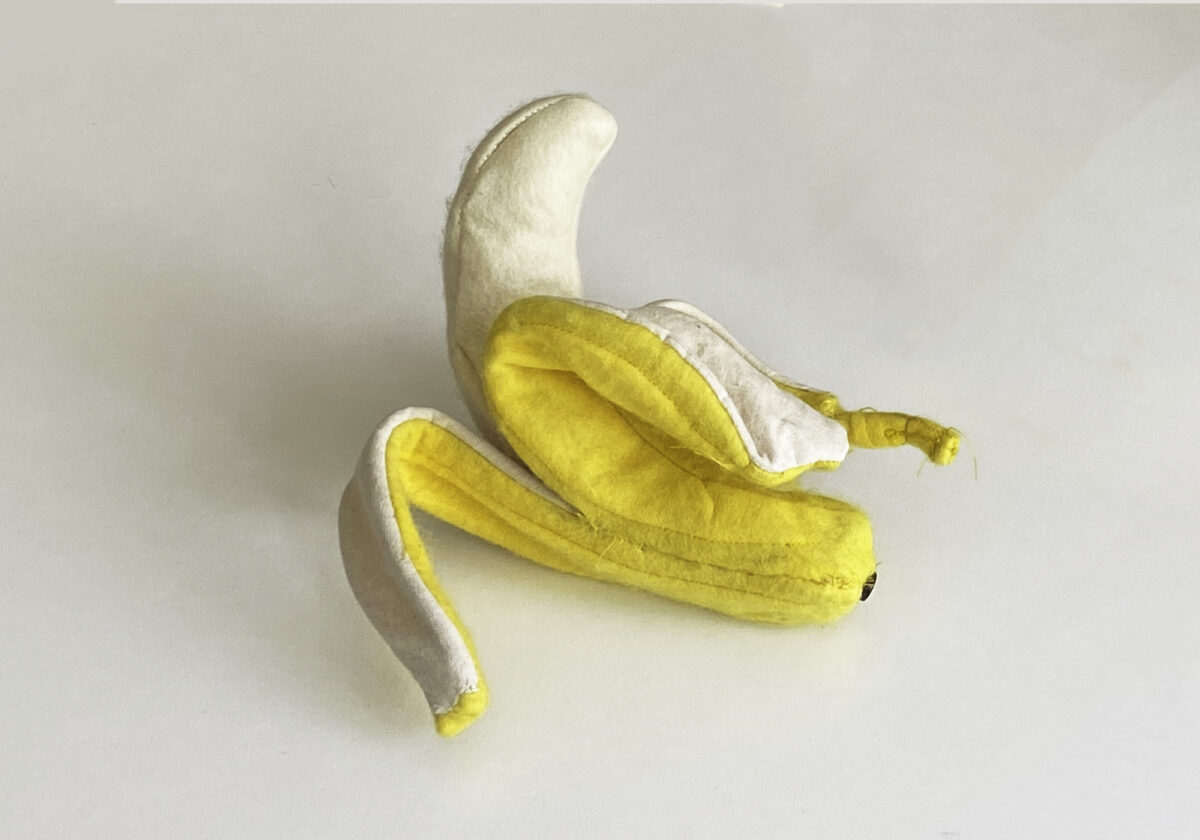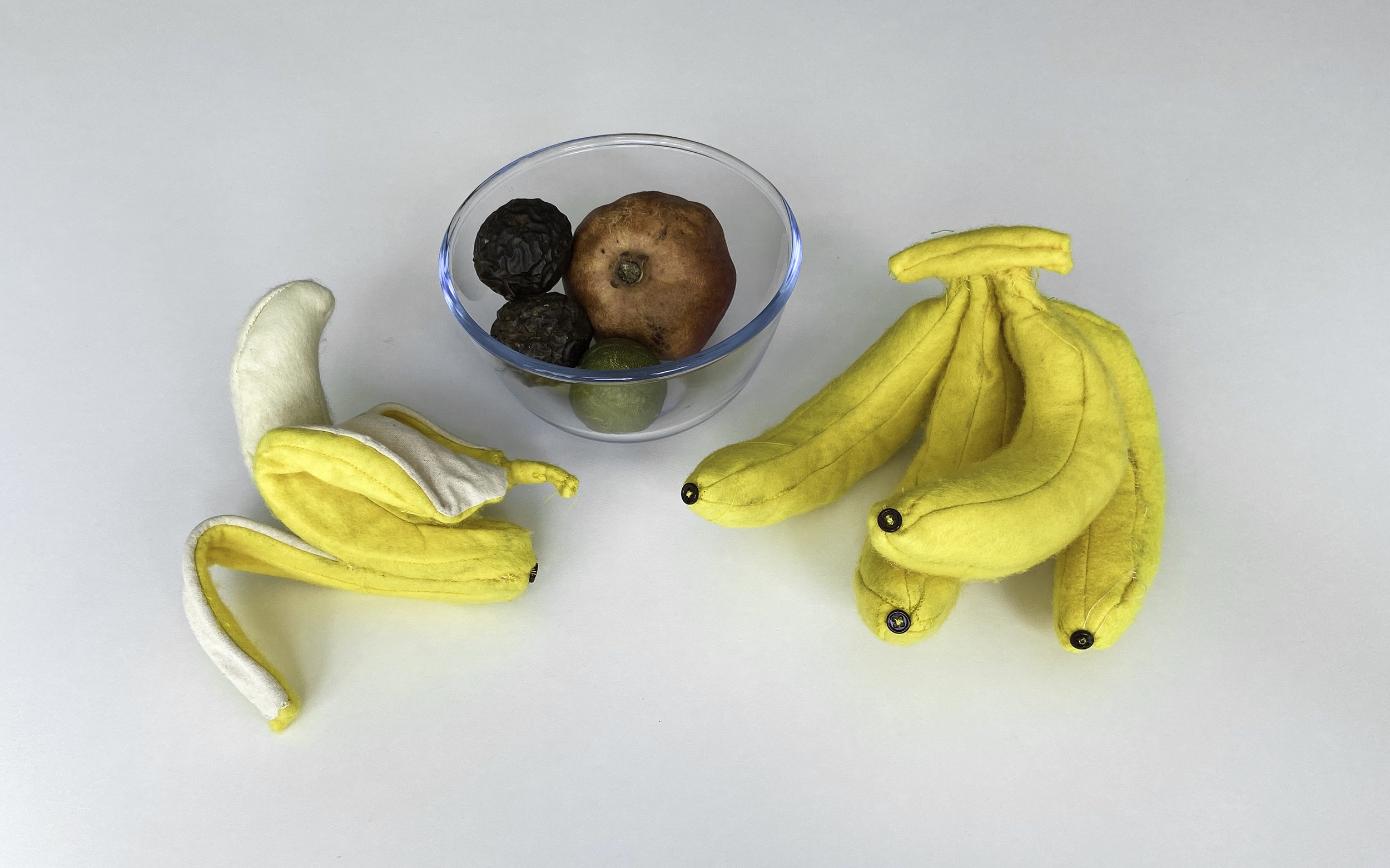
'Immortality' Felt, fibre filling
My project starts from James Elkins’ notion of ‘the object stares back’. Though at first glance absurd, I intended to deal with the weight of presence exerted by ‘things’. Originating from the heritage of still-life paintings, my works are snapshots of the ‘microcosm’ – in Norman Bryson’s words of ‘the overlooked’ .
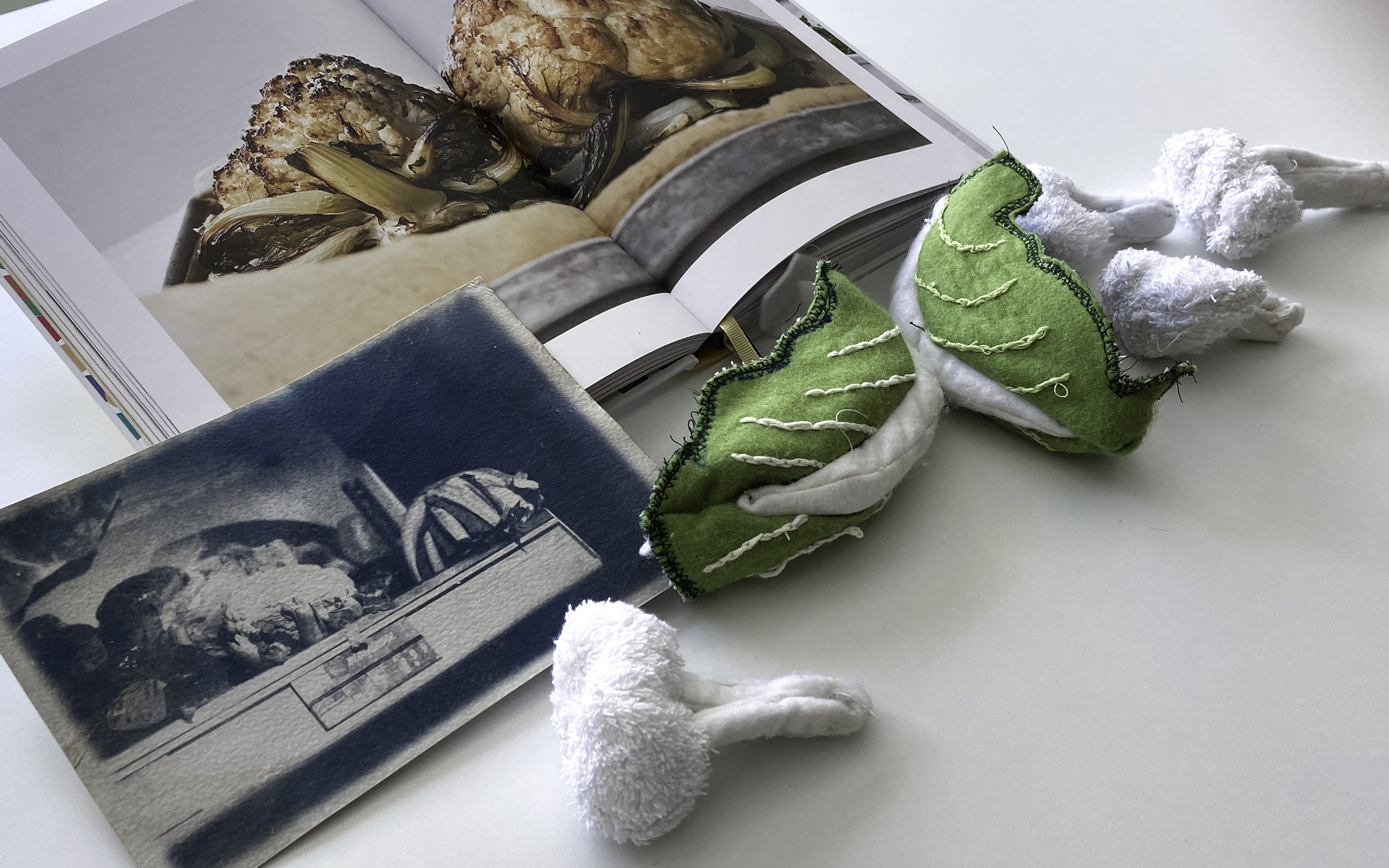
'Melancaulia' Mixed-fabric, cyanotype on paper, cookbook.
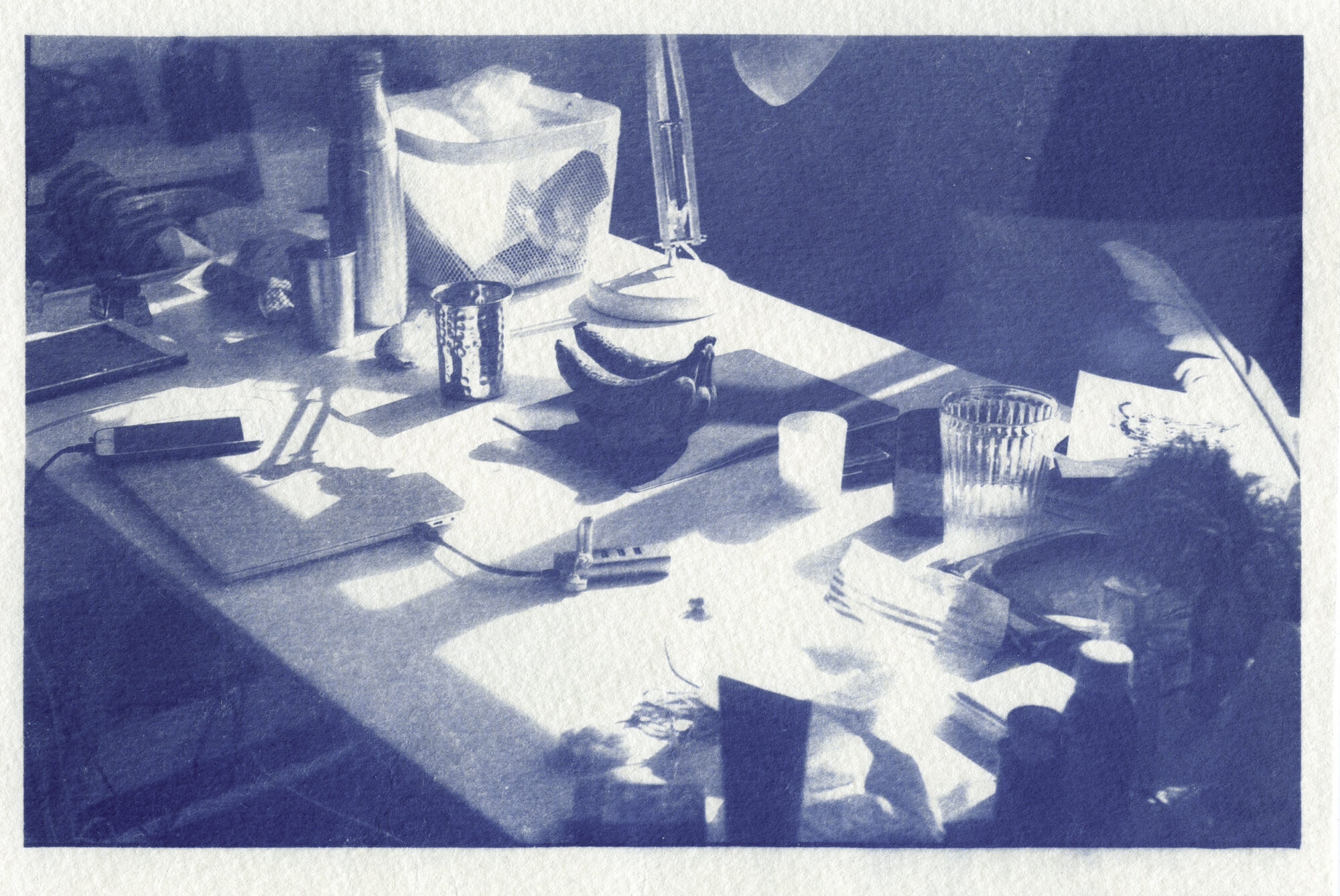
'Already tired of my desk?' Cyanotype on paper
The materiality of nonhuman actants is the focus to my practice. For instance, We were all once comedians advocates the vitalist conception of agency – as Jane Bennett considers objects ‘less as social constructions and more as actors.’ Remaking the perishable bananas in felt, I augmented the theatricality of the apparently banal things. Nodding to Oldenburg and Cattelan, I would like to invite you to think of the implicit meaning of the banana as a symbol of the consumption in the ‘art world’.
I make art about art. ‘The intentional reflexivity interplayed between human and nonhuman forces’ (Bennett, 2010) is the prime interest of my photographic works. This also elicits the tension between the aesthetic and consumerist attributes of an artwork – as hinted in the photobookWork of Art. Strolling through TEFAF Masstrict draws an uncanny parallel to walking down the supermarket isles. Thus recalled the view articulated in Guy Debord’s ‘The Society of the Spectacle’ - the extent to which our appreciation for art objects now are deeply entangled with a market and image oriented world. I do not wish to resolve the tension, but merely to let them speak for themselves.
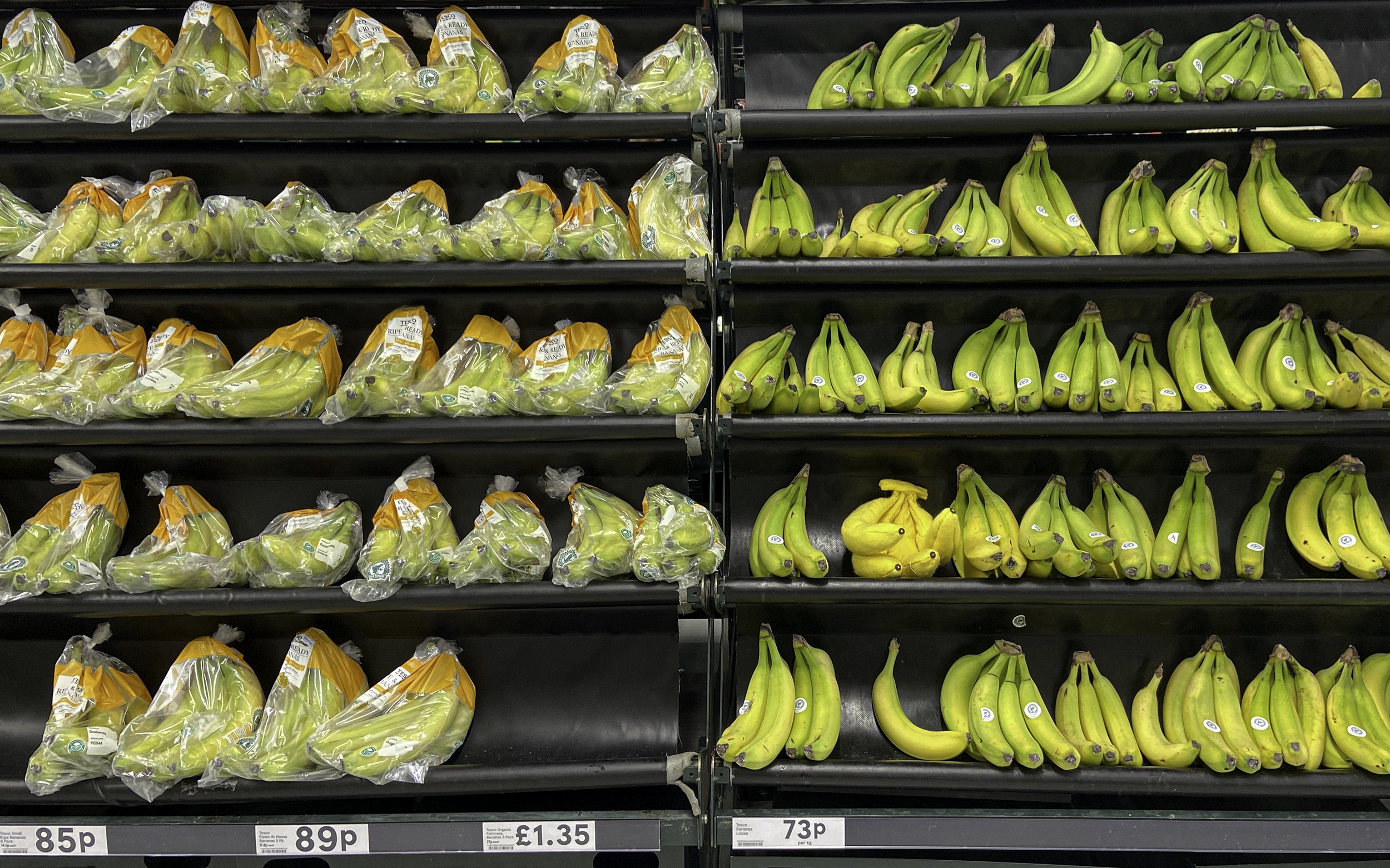
'We were all once comedians' Felt, fibre filling, bananas, supermarket shelf.
Self-reflexive works. 35mm photographs printed on paper
Works of Art
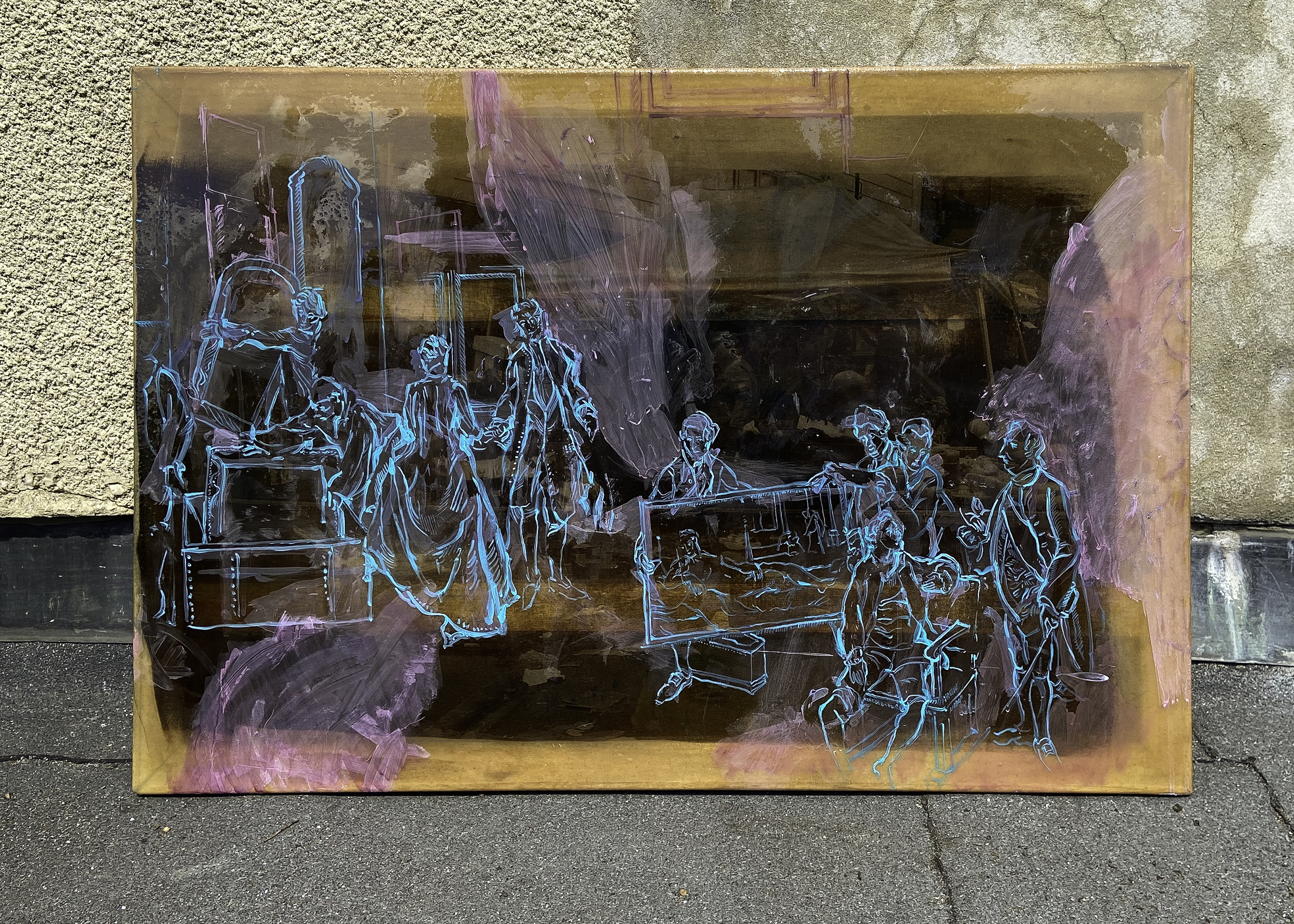
'Untitled' (plastic canvas no.1) Mixed-media
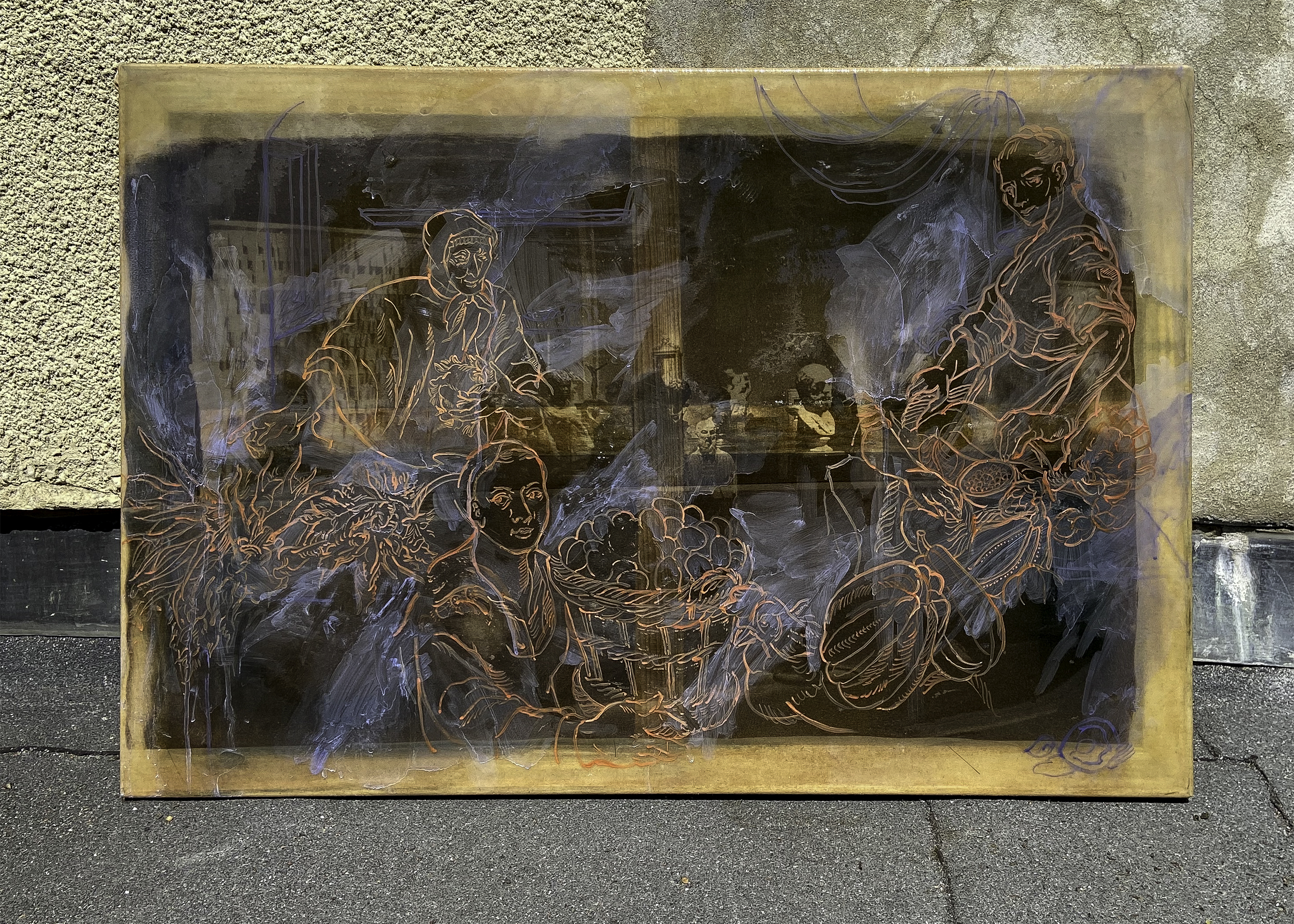
'Untitled' (plastic canvas no.2) Mixed-media
Untitled (plastic canvases) continued to address the same subject from a different angle. Inspired by Carol Armstrong’s essay ‘Painting Photography Painting: Timelines and Medium specificities’, I combined historical depictions of consumption with my photography. Whilst the lockdown prevented access to a darkroom, I turned to embrace cyanotypes for translating the imageries. Referring to the painterly photographs by Sigmar Polke, I reconsidered the balance between manipulation and the degree of elusiveness in prints. As he suggested: ‘It cannot be the task of the painter to investigate whether something is good or bad, and to judge.’ – I wish to allude to some themes without providing a definitive answer.
Links

'Immortality' Felt, fibre filling
My project starts from James Elkins’ notion of ‘the object stares back’. Though at first glance absurd, I intended to deal with the weight of presence exerted by ‘things’. Originating from the heritage of still-life paintings, my works are snapshots of the ‘microcosm’ – in Norman Bryson’s words of ‘the overlooked’ .

'Melancaulia' Mixed-fabric, cyanotype on paper, cookbook.

'Already tired of my desk?' Cyanotype on paper
The materiality of nonhuman actants is the focus to my practice. For instance, We were all once comedians advocates the vitalist conception of agency – as Jane Bennett considers objects ‘less as social constructions and more as actors.’ Remaking the perishable bananas in felt, I augmented the theatricality of the apparently banal things. Nodding to Oldenburg and Cattelan, I would like to invite you to think of the implicit meaning of the banana as a symbol of the consumption in the ‘art world’.
I make art about art. ‘The intentional reflexivity interplayed between human and nonhuman forces’ (Bennett, 2010) is the prime interest of my photographic works. This also elicits the tension between the aesthetic and consumerist attributes of an artwork – as hinted in the photobookWork of Art. Strolling through TEFAF Masstrict draws an uncanny parallel to walking down the supermarket isles. Thus recalled the view articulated in Guy Debord’s ‘The Society of the Spectacle’ - the extent to which our appreciation for art objects now are deeply entangled with a market and image oriented world. I do not wish to resolve the tension, but merely to let them speak for themselves.

'We were all once comedians' Felt, fibre filling, bananas, supermarket shelf.
Self-reflexive works. 35mm photographs printed on paper
Works of Art

'Untitled' (plastic canvas no.1) Mixed-media

'Untitled' (plastic canvas no.2) Mixed-media
Untitled (plastic canvases) continued to address the same subject from a different angle. Inspired by Carol Armstrong’s essay ‘Painting Photography Painting: Timelines and Medium specificities’, I combined historical depictions of consumption with my photography. Whilst the lockdown prevented access to a darkroom, I turned to embrace cyanotypes for translating the imageries. Referring to the painterly photographs by Sigmar Polke, I reconsidered the balance between manipulation and the degree of elusiveness in prints. As he suggested: ‘It cannot be the task of the painter to investigate whether something is good or bad, and to judge.’ – I wish to allude to some themes without providing a definitive answer.
Links
